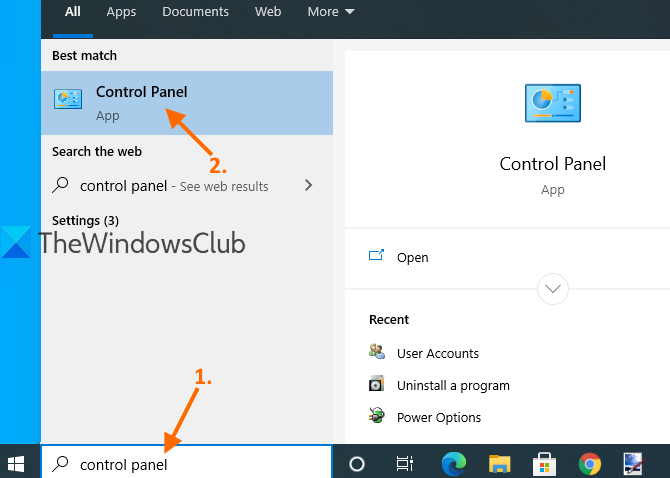

Swipe in from the right edge of the screen, tap Search (or if you're using a mouse, point to the upper-right corner of the screen, move the mouse pointer down, and then click Search), enter Control Panel in the search box, and then tap or click Control Panel.Ĭlick the Start button, and then click Control Panel. In the search box on the taskbar, type control panel, and then select Control Panel. These settings control nearly everything about how Windows looks and works, and you can use them to set up Windows so that it's just right for you. Version control applied to the configuration can be rapidly reverted to a last known stable state.You can use Control Panel to change settings for Windows. When a change is made to configuration data, the version control system tracks it, which allows team members to review an audit trail of modifications.Ĭonfiguration version control enables rollback or “undo” functionality to configuration, which helps avoid unexpected breakage. Version control and configuration management solve this problem by adding visibility to configuration modifications. When the software is later deployed to a production environment, this new configuration may have a suboptimal effect or may break. One team member may tweak a hardware allocation value so that the software runs more efficiently on their personal laptop. Without version control this can cause problems. Managing unexpected changes through the use of code review and version control helps to minimize downtime.Ĭonfiguration values will often be added, removed, or modified. Version control also solves another configuration problem: unexpected breaking changes.

Moving configuration data into a Git repository enables version control and the repository to act as a source of truth. Git is a fantastic platform for managing configuration data. Configuration management solves this challenge by creating a “source of truth” with a central location for configuration. Imagine numerous post-it notes with passwords and URLs blowing around an office. It’s easy for these configuration values to become an afterthought, leading to the configuration to become disorganized and scattered. Secrets like passwords and encryption keys.Endpoints that specify external connections to other services, databases, or domains.Specifications of computational hardware resource allocations for CPU, RAM, etc.Some examples of software configuration metadata are: Each service in a microservice architecture uses configuration metadata to register itself and initialize. For a more concrete example consider a microservice architecture. Complex software systems are composed of components that differ in granularity of size and complexity. Configuration management helps engineering teams build robust and stable systems through the use of tools that automatically manage and monitor updates to configuration data.


 0 kommentar(er)
0 kommentar(er)
